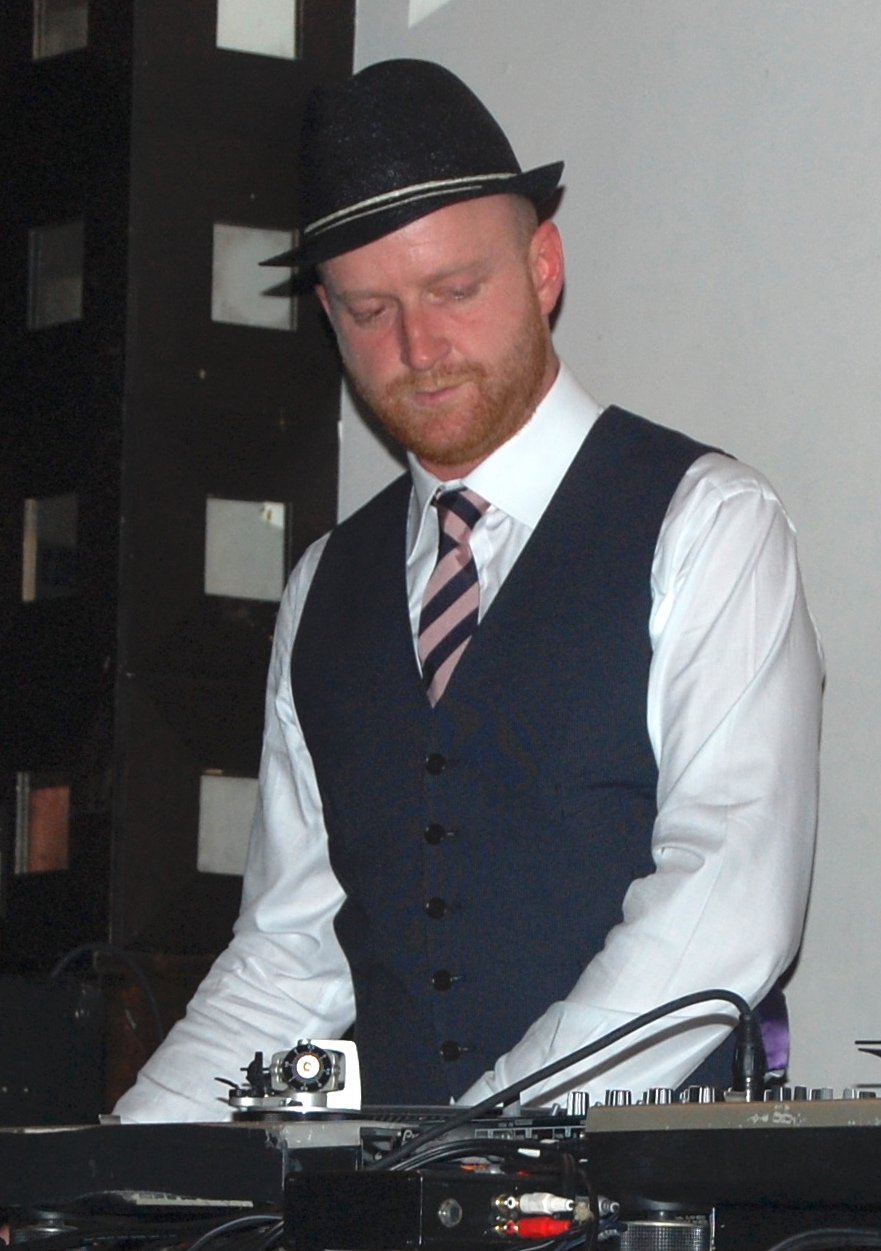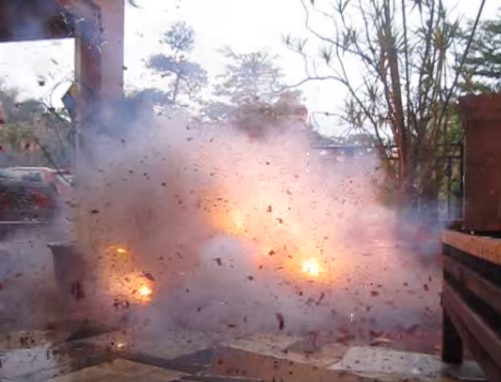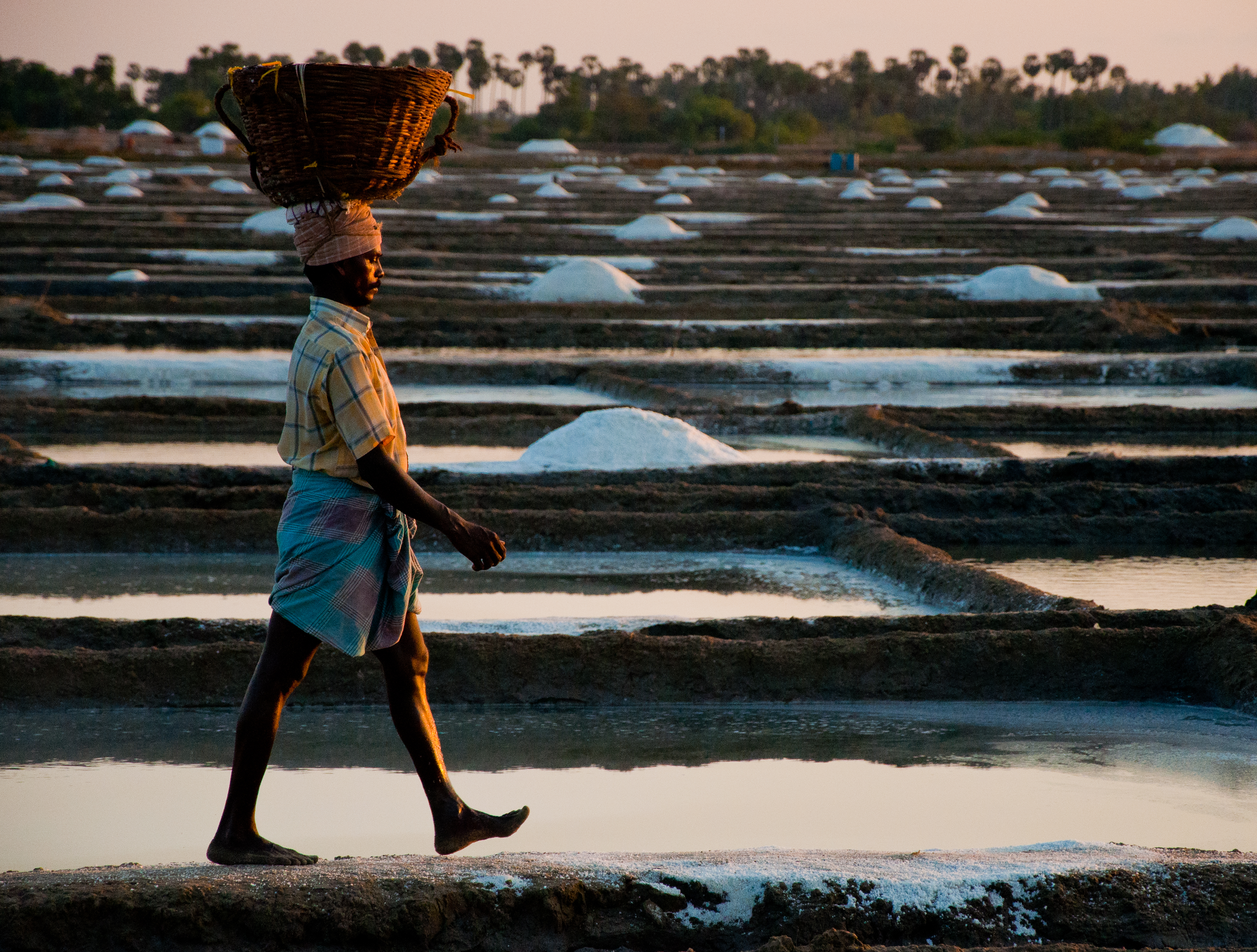|
Dappan Koothu
Dappankuthu (or simply Kuthu) is a folk dance and music genre with an emphasis on percussion performed in the South Indian state of Tamil Nadu. It is one of several popular genres employed in film music, mainly in Tamil cinema and other South films, filmed and produced by people of Tamil culture. Unlike classical Indian dances such as bharatanatyam or kathakali, dappankuthu is relatively informal in that it has no structured, repeated steps and dancers do not learn through formal dance classes. It shares its emphasis on percussion with older folk dances of Tamil Nadu, such as kummi and kolattam. Musical instruments A percussion instrument called Tharai thappattai in Tamil, without the jingles, is often used for dappankuthu or similar dance forms. Unlike normal tambourines, this requires a wooden stick to play. The urumee drum is also often used. A customised trumpet (called Nadaswaram locally) is also sometimes employed. The rhythm of the dappankuthu is often signified by ... [...More Info...] [...Related Items...] OR: [Wikipedia] [Google] [Baidu] |
Tamil Music
Music of Tamil Nadu has a long tradition and history going back thousands of years. Music is a very important aspect of marriage and temple festival Tamil people. Ancient music The tradition of Tamil music goes back to the earliest period of Tamil history. Many poems of the Sangam literature, the classical Tamil literature of the early common era, were set to music. There are various references to this ancient musical tradition found in the ancient Sangam books such as ''Ettuthokai'' and '' Pathupattu''. The early narrative poem '' Silappatikaram'', belonging to the post-Sangam period also mentions various forms of music practiced by the Tamil people. Music was also utilised in the compositions of the Tamil Saiva saints such as Appar, Thirugnana Sambanthar and Manikkavasagar during the Hindu revival period between the sixth and the tenth centuries CE. The musical poet (''sandakkavi'') Arunagirinathar further embellished the Tamil musical tradition through his compositions ... [...More Info...] [...Related Items...] OR: [Wikipedia] [Google] [Baidu] |
Tambourine
The tambourine is a musical instrument in the percussion family consisting of a frame, often of wood or plastic, with pairs of small metal jingles, called " zills". Classically the term tambourine denotes an instrument with a drumhead, though some variants may not have a head. Tambourines are often used with regular percussion sets. They can be mounted, for example on a stand as part of a drum kit (and played with drum sticks), or they can be held in the hand and played by tapping or hitting the instrument. Tambourines come in many shapes with the most common being circular. It is found in many forms of music: Turkish folk music, Greek folk music, Italian folk music, French folk music, classical music, Persian music, samba, gospel music, pop music, country music, and rock music. History The origin of the tambourine is unknown, but it appears in historical writings as early as 1700 BC and was used by ancient musicians in West Africa, the Middle East, Greece and In ... [...More Info...] [...Related Items...] OR: [Wikipedia] [Google] [Baidu] |
Tamil Dance Styles
Tamil may refer to: * Tamils, an ethnic group native to India and some other parts of Asia **Sri Lankan Tamils, Tamil people native to Sri Lanka also called ilankai tamils **Tamil Malaysians, Tamil people native to Malaysia * Tamil language, natively spoken by the Tamils * Tamil script, primarily used to write the Tamil language **Tamil (Unicode block), a block of Tamil characters in Unicode * Tamil dialects, referencing geographical variations in speech See also * Tamil cinema, also known as Kollywood, the word being a portmanteau of Kodambakkam and Hollywood. * Tamil cuisine * Tamil culture, is considered to be one of the world's oldest civilizations. * Tamil diaspora * Tamil Eelam, a proposed independent state in the north and east of Sri Lanka * Tamil Nadu, one of the 28 states of India * Tamil nationalism * ''Tamil News'', a daily Tamil-language television news program in Tamil Nadu * Tamilakam Tamiḻakam (Tamil: தமிழகம்; Malayalam: തമിഴകം), ref ... [...More Info...] [...Related Items...] OR: [Wikipedia] [Google] [Baidu] |
Kala (album)
''Kala'' is the second studio album by British hip hop artist M.I.A. It was released on 8 August 2007 by XL Recordings. M.I.A. named the album after her mother and said her mother's struggles in life are a major theme of the recording. It was mainly written and produced by M.I.A. and Switch, and features contributions from Timbaland, Diplo, Afrikan Boy and The Wilcannia Mob. M.I.A. initially planned to work with American producer Timbaland for the bulk of the album, but was unable to gain a long-term work visa to enter the US. She hence recorded the album at numerous locations around the world, including India, Angola, Trinidad, Liberia, Jamaica and Australia. M.I.A. and Switch relied heavily on the digital audio workstation Logic Pro and recorded additional vocals and background sounds outside the traditional studio environment. ''Kala'' incorporates prominent influences from South Asian music, featuring samples of Bollywood and Tamil cinema. The album draws on various s ... [...More Info...] [...Related Items...] OR: [Wikipedia] [Google] [Baidu] |
Bird Flu (song)
"Bird Flu" is an urumee melam-dance song by recording artist M.I.A. on her second studio album ''Kala'' (2007). It was released as a digital download in 2006 through XL Recordings under exclusive license to Interscope Records in the US. Critics noted its autobiographical lyrics "updated to the present day, where she's straddling the line between major-label success and her own crazy-ass major-label-bucking tendencies, singing she's too cool "to be a Rocawear model," whilst adding that she couldn't be a "rocker on a label"- they wouldn't have her because "...my beats were too evil." Also praised was the song's utilization of the folk urumee melam/gaana music, a Tamil genre of music that the writer was familiar with having grown up in Jaffna. Arulpragasam recorded the song using live drummers from temples in Chennai. M.I.A. wanted to work with Tamil folk music as it gave her a sense of rhythm as a child and she wanted to draw certain aspects from Indian music that Western audi ... [...More Info...] [...Related Items...] OR: [Wikipedia] [Google] [Baidu] |
Boyz (M
Boyz or The Boyz may refer to: Music Bands *The Boyz (German band), a German boy band of the 1990s *The Boyz (American band), an American rock band from Los Angeles, California, established in 1975 *The Boyz (South Korean band), a South Korean boy group formed by IST Entertainment in 2017 *Boy'z Boy'z is a Hong Kong Cantopop duo produced by EEG consisting of members Kenny Kwan and Steven Cheung. Kwan left the group in 2005, and was replaced with Dennis Mak in 2005. In 2006, William Chan joined the group, forming the trio Sun Boy'z. T ..., a Hong Kong cantopop duo Songs * "Boyz" (M.I.A. song), 2007 * "Boyz" (Jesy Nelson song), 2021 Other uses * ''Boyz'' (film), a 2017 Marathi film * ''Boyz'' (magazine), a British weekly LGBT magazine See also * Boys (other) {{disambiguation ... [...More Info...] [...Related Items...] OR: [Wikipedia] [Google] [Baidu] |
Firecracker
A firecracker (cracker, noise maker, banger) is a small explosive device primarily designed to produce a large amount of noise, especially in the form of a loud bang, usually for celebration or entertainment; any visual effect is incidental to this goal. They have fuses, and are wrapped in a heavy paper casing to contain the explosive compound. Firecrackers, along with fireworks, originated in China. History The predecessor of the firecracker was a type of heated bamboo, used as early as 200 BCE, that exploded when heated continuously. The Chinese name for firecrackers, 爆竹(''baozhu''), literally means "exploding bamboo." After the invention of gunpowder, gunpowder firecrackers had a shape that resembled bamboo and produced a similar sound, so the name "exploding bamboo" was retained. In traditional Chinese culture, firecrackers were used to scare off enemies or evil spirits. Firecrackers production and sales Ingredients Firecrackers are generally made of cardboard ... [...More Info...] [...Related Items...] OR: [Wikipedia] [Google] [Baidu] |
Whistling
Whistling without the use of an artificial whistle is achieved by creating a small opening with one's lips, usually after applying moisture (licking one's lips or placing water upon them) and then blowing or sucking air through the space. The air is moderated by the lips, curled tongue, teeth or fingers (placed over the mouth or in various areas between pursed lips) to create turbulence, and the curled tongue acts as a resonant chamber to enhance the resulting sound by acting as a type of Helmholtz resonator. By moving the various parts of the lips, fingers, tongue and epiglottis, one can then manipulate the types of whistles produced. Techniques Pucker whistling is the most common form in much Western music. Typically, the tongue tip is lowered, often placed behind the lower teeth, and pitch altered by varying the position of the tongue. Although varying the degree of pucker will change the pitch of a pucker whistle, expert pucker whistlers will generally only make small var ... [...More Info...] [...Related Items...] OR: [Wikipedia] [Google] [Baidu] |
Clapping
A clap is the percussive sound made by striking together two flat surfaces, as in the body parts of humans or animals. Humans clap with the palms of their hands, often quickly and repeatedly to express appreciation or approval (see applause), but also in rhythm as a form of body percussion to match the sounds in music, dance, chants, hand games, and clapping games. Some people slap the back of one hand into the palm of the other hand to signify urgency or enthusiasm. This act may be considered uncouth by others. Clapping is used in many forms of music. In American music, clapping is popular in Gospel, Doo-wop and early Pop. In flamenco and sevillanas, two Spanish musical genres, clapping is called '' palmas'' and often sets the rhythm and is an integral part of the songs. A sampled or synthesized clap is also a staple of electronic and pop music. Musical works that include clapping Classical works performed entirely by clapping * Steve Reich, '' Clapping Music'' (1972) * ... [...More Info...] [...Related Items...] OR: [Wikipedia] [Google] [Baidu] |
Lungi
The lungi is a type of sarong that originated in the Indian Subcontinent. The Lungi, which usually multicoloured, is a men's skirt usually tied around the lower waist below the navel. it can be worn as casual wear and night wear, in places and climates where the heat and humidity increase sweating, and make it unpleasant or uncomfortable to wear closed and tight clothes such as trousers. Design They are especially worn in hot regions. There are also cheaper "open" lungis, in identical dimensions but not sewn into a tube shape. The standard adult lungi is in height and in length, when open. Children's lungis are approximately two-thirds of this size. They are normally woven from cotton and come in a variety of designs and colors. Silk lungis are used for ceremonial purposes such as weddings. The most common styles are solid-colored and plaid, reflecting the relative ease and cost-effectiveness of producing these patterns on a power loom. Blue is particularly popular, since it ... [...More Info...] [...Related Items...] OR: [Wikipedia] [Google] [Baidu] |
The Times Of India
''The Times of India'', also known by its abbreviation ''TOI'', is an Indian English-language daily newspaper and digital news media owned and managed by The Times Group. It is the third-largest newspaper in India by circulation and largest selling English-language daily in the world. It is the oldest English-language newspaper in India, and the second-oldest Indian newspaper still in circulation, with its first edition published in 1838. It is nicknamed as "The Old Lady of Bori Bunder", and is an Indian " newspaper of record". Near the beginning of the 20th century, Lord Curzon, the Viceroy of India, called ''TOI'' "the leading paper in Asia". In 1991, the BBC ranked ''TOI'' among the world's six best newspapers. It is owned and published by Bennett, Coleman & Co. Ltd. (B.C.C.L.), which is owned by the Sahu Jain family. In the Brand Trust Report India study 2019, ''TOI'' was rated as the most trusted English newspaper in India. Reuters rated ''TOI'' as India's most tr ... [...More Info...] [...Related Items...] OR: [Wikipedia] [Google] [Baidu] |
The Hindu
''The Hindu'' is an Indian English-language daily newspaper owned by The Hindu Group, headquartered in Chennai, Tamil Nadu. It began as a weekly in 1878 and became a daily in 1889. It is one of the Indian newspapers of record and the second most circulated English-language newspaper in India, after ''The Times of India''. , ''The Hindu'' is published from 21 locations across 11 states of India. ''The Hindu'' has been a family-owned newspaper since 1905, when it was purchased by S. Kasturi Ranga Iyengar from the original founders. It is now jointly owned by Iyengar's descendants, referred to as the "Kasturi family", who serve as the directors of the holding company. The current chairperson of the group is Malini Parthasarathy, a great-granddaughter of Iyengar. Except for a period of about two years, when S. Varadarajan held the editorship of the newspaper, the editorial positions of the paper were always held by members of the family or held under their direction. His ... [...More Info...] [...Related Items...] OR: [Wikipedia] [Google] [Baidu] |





.jpg)


